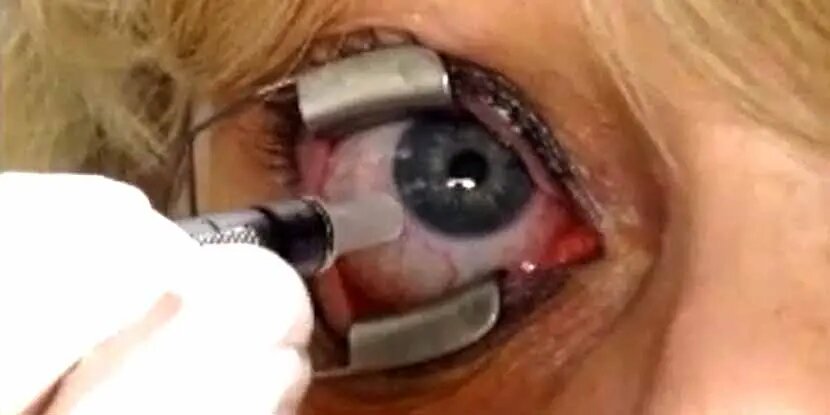One of the most efficient ways to slow down and occasionally even stop vision loss caused by wet Age-related macular degeneration (AMD) is by anti-vascular endothelial growth factor (VEGF) injections. These injections are given by an ophthalmologist to each affected eye at regular intervals, often every four weeks. It is crucial that anti-VEGF medicine just enters your eye and nowhere else in your body because VEGF is advantageous in other parts of the body Because of this, your doctor will provide the drug through injection right into your vitreous cavity. This is the area of your eye between your lens and retina that is filled with fluid.
Treatment for wet AMD often involves a number of different injections. In addition components that aid in the injection’s effectiveness, each injection comprises a new anti-VEGF drug in a sterile solution. In each instance, chemically created short RNA (nucleic acid) aptamer strands block the binding of the VEGF to its receptor.
VEGF is carried by the blood. The endothelium, the lining of blood arteries, contains receptor sites with which it interacts. Increasing blood vessels’ permeability (leakiness) and aiding in the development of new ones are the two goals of VEGF. The development of new blood vessels is crucial for processes like wound healing.
However, excessive blood vessel development and permeability in the eyes might result in wet AMD.
The binding activity of anti-VEGF medication stops VEGF from connecting with endothelial receptor sites when it is administered into your eyes. This reduces or prevents the excess vessel growth and blood vessel leakage that are present in wet AMD.
This injection are administered in your doctor’s office. In addition to cleaning the surface of your eye, your doctor will apply numbing drops to ensure that you do not experience any pain. Your eyelids will be held open by a device, and a thin needle will be used to administer the injection. You can experience a slight pinch of pressure or discomfort during the injection. As the fluid in your eye mixes with the fluid that was injected, you can possibly have a visual disturbance.
Your doctor will examine your eye and clean the area around it following your treatment. The usage of antibiotic eye drops and acetaminophen (Tylenol) or ibuprofen (Advil) for pain relief are a few examples of the follow-up care instructions that you will be given.
You may have some mild floaters, soreness, and blurred vision. These signs, however, ought to be brief and disappear in a day or two.
Anti-VEGF injection adverse effects are more frequently brought on by the injection process than by the medications used.
There could be a small bleed where the needle entered, blurred vision, eye pain or redness, floaters, increased pressure inside the eye, infection, and sensitivity to light, among other possible adverse effects. Serious side effects including retinal tears or detachments are extremely uncommon, occurring in approximately 0.1 percent of patients.
Anti-VEGF therapies are quite effective at halting vision loss due to wet AMD. Up to 90% of patients who receive these injections report seeing their vision stabilised. Up to 30% of persons with wet AMD may potentially restore some of their vision if it is detected earlier.
At The Eye Center- Dr. Mahnaz Naveed Shah & Associates our team of eight ophthalmology subspecialists/ eye specialists, eye surgeons who are considered amongst the very best eye specialists in Karachi and in Pakistan, have the diagnostic and treatment capabilities to treat from the simplest to the most complex patients. We work hard to provide our patients with the best possible medical and surgical eye care, in a state of the art purpose built eye care facility. We offer the entire array of medical, laser and surgical treatments to help provide patients the best possible care in the most efficient, safe and ethical manner.
If you need an appointment, please contact us at 03041119544 during our working hours or leave us a WhatsApp message at +923028291799 and someone will connect with you. Walk-in appointments are also available for emergencies. We can also be reached through our web portal on www.surgicaleyecenter.org


